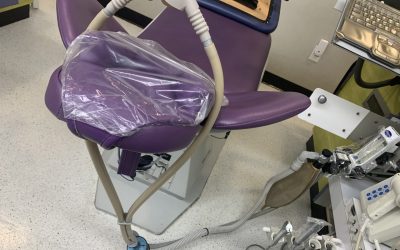With a variety of extracellular and intracellular amplifiers available, we often get asked for a recommendation on which amplifier to purchase. This short essay will describe how to go about determining the best amplifier for your application.
- Skip toExtracellular Amplifiers
- Skip toIntracellular Amplifiers
- Skip toAmplifier Selection Flowchart
- Skip toAmplifier Application Chart
Extracellular Amplifier
以下问题的答案将决定which A-M Systems amplifier is the best for your planned experiments.
- What is the impedance range of the electrodes you intend to use?
- Will your subject be freely moving, or restrained?
- How many channels would you like to record from simultaneously?
- Will you be requiring stimulation to be passed through the amplifier to the same electrodes you are recording from?
- Do you require DC recording capability?
- Do you require software control of your amplifier settings?
Question 1:What is the impedance range of the electrodes you intend to use?
Question 2:Will your subject be freely moving, or restrained?
The use of a pre-amplifying headstage is determined by the impedance of your electrode. By simple circuit analysis, your electrode can be modeled by a resistor, and the cable from your electrode to the base amplifier can be modeled by a capacitor. Dangling a resistor in series with a long capacitor to ground results in a low-pass RC filter:
The ensuing RC filter can potentially alter the recording waveform. The recorded signal may be:
- smaller in amplitude than the original signal; and
- filtered for higher frequencies.
This problem is more pronounced with higher impedance electrodes, such as insulated microprobes with very fine tips. The solution to this challenge is the use of a high-impedance pre-amplifying headstage that will faithfully capture the input signal before transmitting it down the length of the cable. We recommend the use of a headstage when the impedance of the electrode exceeds 1.5 MΩ.
Headstages are also recommended when the recording subject is freely moving as cable movement can also generate induced noise within the recorded signal.
Thus,if the answer to Question 1 is “Greater than 1.5 MΩ” OR the answer to question 2 is “yes”, we would recommend the use of a pre-amplifying headstage.
All of our amplifiers can be equipped with headstages. On our single-channelModel 3000, four-channelModel 1700, or 16-channelModel 3500, they are optional. On our dual-channelModel 1800, and our 16-channelModel 3600, they are required.
In practice, this means that the non-headstage versions are often used to record signals such as EEG, EMG, Evoked Potentials, and LTP, whereas our headstage versions are used to record signal action potentials and multi-unit recordings.
Questions 3: “How many channels do you want to record from simultaneously?”
That is essentially a cost-saving question. On a per-channel basis, our multichannel amplifiers can save you some money. Just because an amplifier is multichannel does not mean you have to record all channels from a single subject, but wiring multiple subjects to a single amplifier might be challenging. Our multichannel amplifiers offer additional flexibility as well.
For example, you can pair headstages with a subset ofModel 1700channels, resulting in an amplifier that can record 1 EEG signal and 3 spike signals. Or we can modify aModel 1800to record both EEG and spikes from a single electrode by utilizing both channels in the amplifier.
Question 4 “Will you be requiring stimulation to be passed through the amplifier to the same electrodes you are recording from?”
Our amplifiers have the ability to route a stimulation signal from an external source through the amplifier down the leads to the recording electrode without having to physically stop the experiment and change connections. However, it should be noted that this functionality is limited to either our non-headstage configurations or our stimulating and recording headstages.
Question 5“Do you require DC recording capability?”
With the exception of our Model 3000 AC/DC Amplifier, all of our amplifiers are AC coupled and eliminate any DC offsets present in the original signal.
Question 6:“Do you require software control of your amplifier settings?”
虽然在许多情况下,软件控制放大器is not required, as the settings are often not changed during an experiment, there are situations where it is helpful. All of our amplifiers generate an analog output voltage between ±10 V making them compatible with almost all data acquisition systems.
However, only two of our amplifiers allow direct control of instrument settings using a computer. OurModel 3500andModel 360016-Channel Extracellular Amplifiers can be controlled by the free A-M Systems (Windows) software or by user written MATLAB or LabVIEW code.
Naturally, this list of six questions is not the complete list. Your particular experiment might generate additional decision considerations so we encourage you to contact us prior to making a purchase to discuss which amplifier would be perfect for your requirements.
Not for Human Use
None of A-M Systems neuroscience instrumentation is approved for use on human subjects.
Intracellular Amplifier
Choosing an intracellular amplifier is a bit easier, as A-M Systems only offers two such amplifiers, ourModel 1600 Neuroprobe Amplifieror ourModel 3100 Intracellular Amplifier.
The major difference is the extended high range of the Model 1600 Neuroprobe Amplifier. This high range increases the unit’s sensitivity. The 1600, in addition to its low range where the sensitivity is 100 nA/V, its high range increases the sensitivity 10x. So when set to high, the sensititivy is 10 nA/V.
The Model 3100 only has the single range with a 100 nA/V sensitivity. The Model 1600 also utilizes 10-turn potentiometers for greater control of the signals and includes an easy to use display for common measurements.
Finally, attached are two helpful guides that might assist you in making your amplifier decision.
Amplifier Selection Flow Chart
Intracellular Recording
Extracellular Recording
(Over 1.5 MΩ)
(Under 1.5 MΩ)







0 Comments